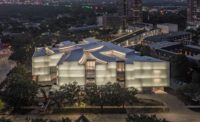Founded by Napoleon in 1810, the Koninklijk Museum voor Schone Kunsten Antwerpen (Royal Museum of Fine Arts Antwerp, or KMSKA) houses a world-class collection that includes 16 Rubenses, six Van Dycks, countless paintings by early Flemish masters, Belgium’s most extensive James Ensor holdings, and much, much more. In 1890, the KMSKA moved to its current, purpose-built home in the new neighborhood of Het Zuid, of which it was the centerpiece. The fruit of a forced marriage between the joint winners of a design competition, Jean-Jacques Winders and Frans Van Dijk (who reputedly hated each other), the eclectically ornamented Beaux-Arts temple dominates its surroundings. Already too small by 1925, when it was first reconfigured, the building was again refurbished in 1976. Untouched and unloved in the quarter century that followed, it had become a creaking, leaking liability by the turn of the millennium. A 2003 call for ideas, with a brief both to renovate and expand, produced a winning master plan by Rotterdam-based KAAN Architecten. Closed in 2011, the revamped KMSKA finally reopened 11 years later, in September 2022.
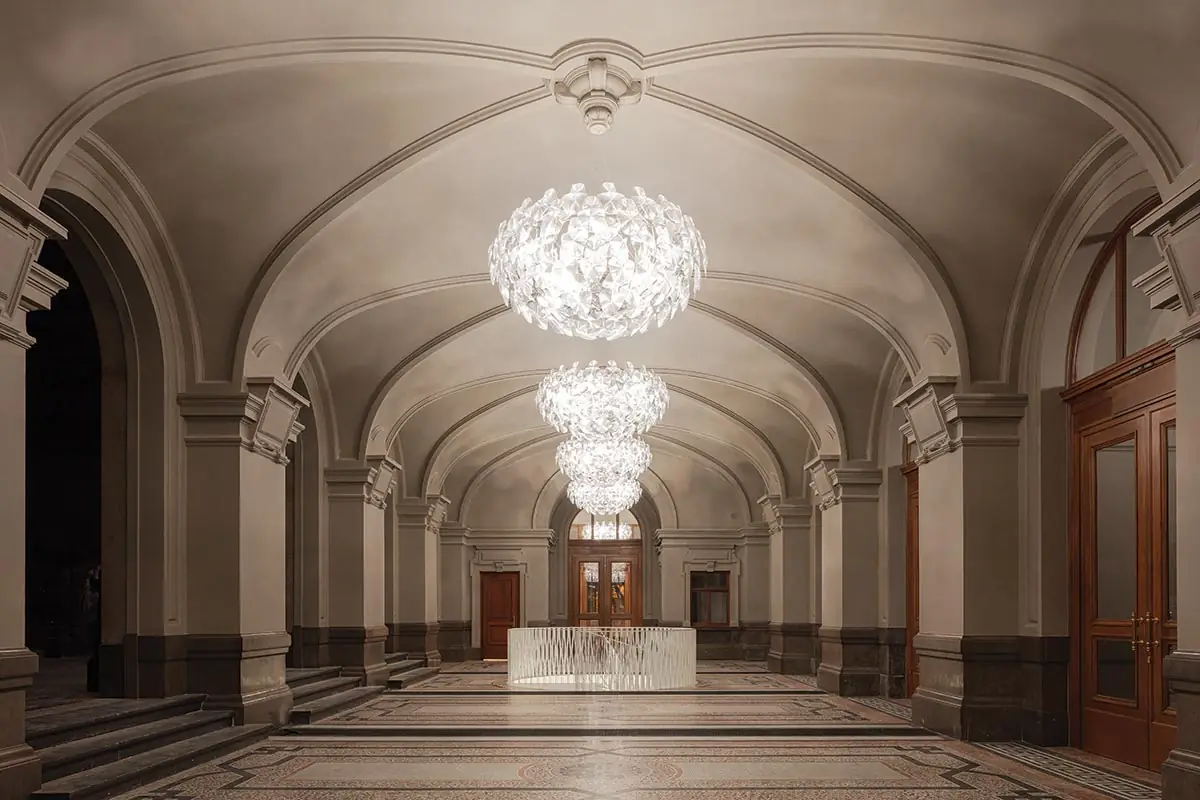
A grand lobby welcomes visitors on entering. Photo © Sebastian Van Damme, click to enlarge.
“The original architecture is so strong,” says Dikkie Scipio, the KAAN partner who led the $109 million transformation. “Our first principle was to respect the building for what it is and bring it back to its original state.” Like Charles Garnier at the Paris Opera (1860–75), Winders and Van Dijk followed classic Beaux-Arts theory when designing their museum. First, they made it a freestanding monument in the middle of a giant square, not only for temple grandeur but also to reduce fire risk. Next, at the exact center of their composition, they placed the dominante, a space embodying the building’s raison d’être—for Garnier the auditorium, for Winders and Van Dijk the Rubens and Van Dyck halls. Around the dominante, they lined up the remainder of the program in logical axial succession: a public-entrance sequence directly borrowed from the Paris Opera (external temple steps, vestibule, monumental stairwell); exhibition areas laid out like long galleries in a stately home and grouped around four large light wells; and another vestibule/staircase sequence at the rear, accessing administrative offices. Again in keeping with Beaux-Arts rationalism, Winders and Van Dijk divided their museum into three levels: tall, top-lit painting galleries on the uppermost floor; side-lit sculpture galleries on the second floor; and a ground-floor storage podium that included a fire-, flood-, and bomb-proof bunker into which the Rubenses and Van Dycks could be lowered via traps (a precaution deemed necessary in light of the long history of armed conflict in the Benelux region).
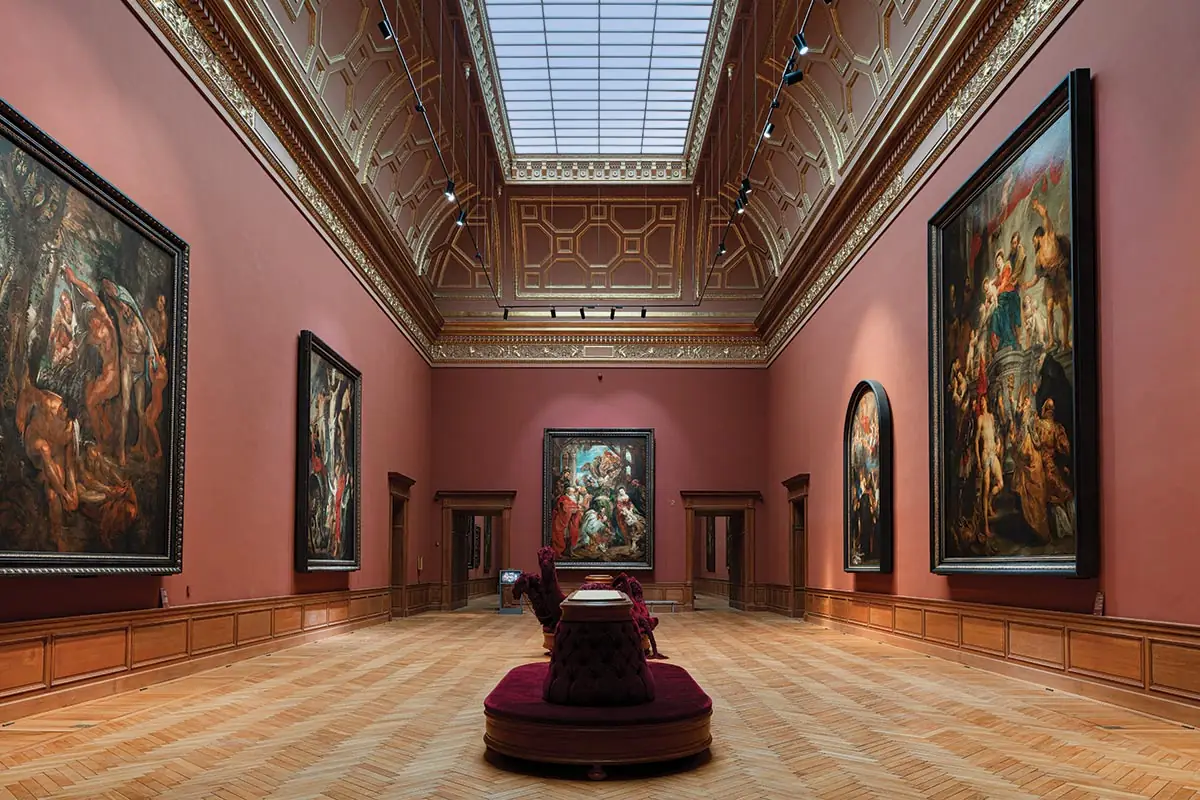
The Rubens Hall displays some of the museum’s most treasured artworks. Photo © Sebastian Van Damme
“In the century following inauguration,” says Scipio, “all sorts of clutter was introduced.” Parts of the main gallery sequence were divided up, either to gain display walls or to squeeze in supplementary back-of-house activities, and extra accommodation added in the light wells. KAAN’s first step was to strip all that out—a huge job in itself, involving asbestos removal and the hand demolition of a nuclear-bomb shelter—to recover the logic of the 1890 plan. “The original concept was fantastic, but then they messed it up!” laughs Scipio. There remained the question of the 24,000 square feet of new gallery space—a 40 percent increase—requested in the competition brief. “We felt the extension had to be invisible from the outside,” explains Scipio. “Otherwise, you destroy the building.” This meant the only place to put it was in the light wells and on the roof. “It’s like a table with four legs,” she continues, “except the tabletop is U-shaped, to skirt round the skylights of the Rubens and Van Dyck halls.”
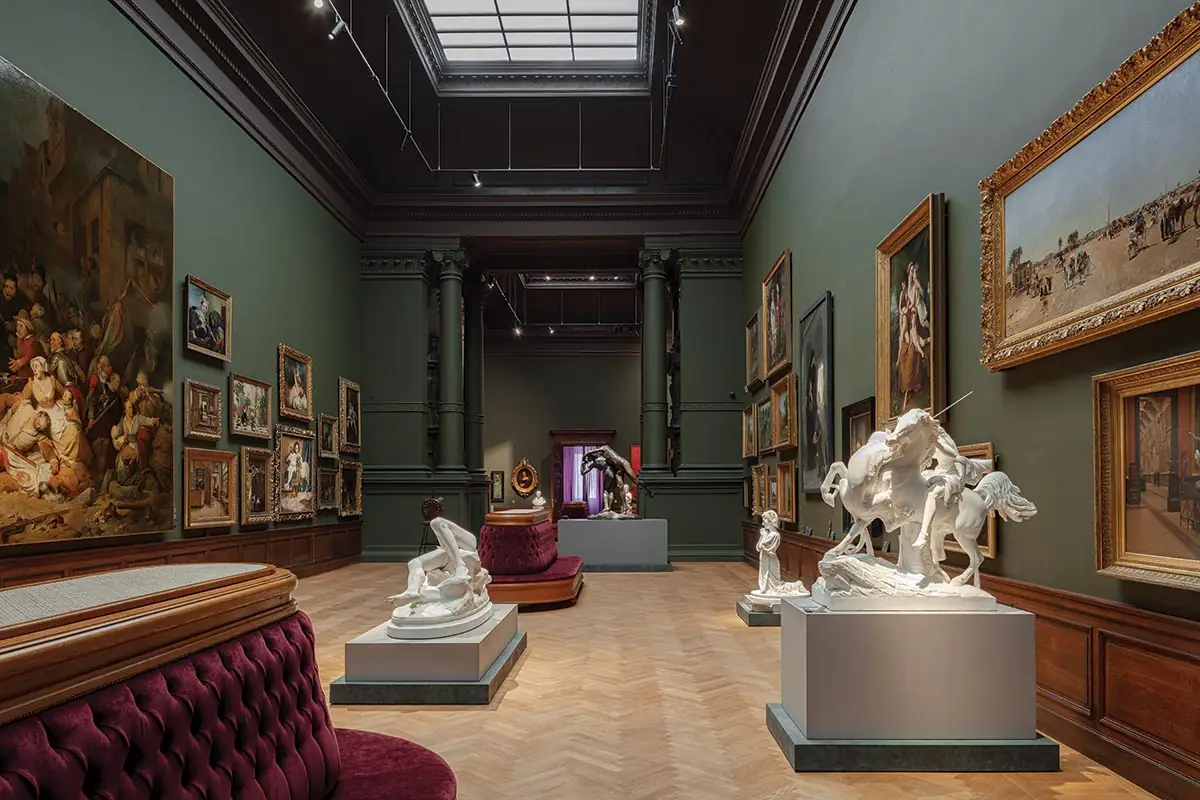
Daylight is an essential aspect to all of the museum’s galleries, including this historic one. Photo © Sebastian Van Damme
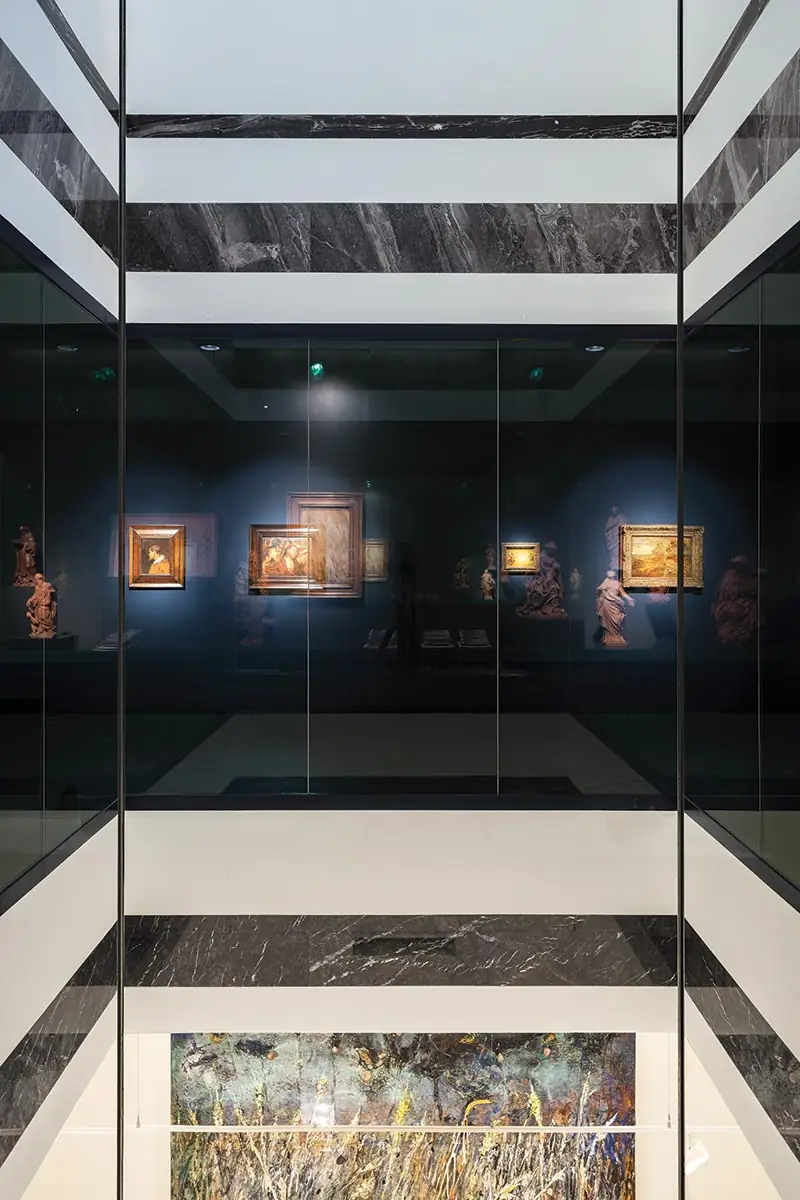
A new level with low ceilings and reduced light was inserted between existing floors to accommodate small and fragile pieces of art. Photo © Sebastian Van Damme
Such discretion is not only uncharacteristic for architects—see Zaha Hadid’s Antwerp Port Authority enlargement just downriver—it is far more complex to achieve than Scipio’s description suggests. First, the steel-framed addition comprises four levels organized as a new, separate circuit: the skylit top-floor galleries, ideal for paintings; below them a technical floor, containing climate-control equipment for the entire building; then a floor of low-ceilinged galleries for fragile and small-scale works; and, at the level of Winders and Van Dijk’s second floor, high-ceilinged monumental halls for large-scale works. Second, to match the quality of the historic museum, KAAN decided that all the new galleries must be naturally lit, which involved cutting light shafts through the middle levels of their extension. Last, there was the question of visitor flow: to avoid a U-shaped circuit with two dead ends, KAAN played with the poché, widening original walls—including the one between the Rubens and Van Dyck halls—to run stairs and passages within them. Highly complex, the slotting of new into old recalls a Chinese 3D puzzle.
Where the historic visitor route is concerned, the architects transferred the library and coat check to the ground floor, installed a new spiral stair linking the coat check to the main vestibule, and moved the restaurant and the museum shop/cafeteria to either end of the latter, creating a new, logical entrance sector. Restored to its 1890s configuration and appearance, Winders and Van Dijk’s gallery circuit now sports rich colors based on paint-scratch samples and teems with a multitude of original details that have been cleaned, repaired, or remade where necessary. Furthermore, KAAN cut concealed slits through certain walls to allow large-scale paintings to move between rooms, and rebuilt all the skylights to bring them up to modern standards. The firm also replaced the HVAC with an innovative new system that forces “art-friendly” air down from the cornice over the paintings, after which it mixes with “human-friendly” air rising from the floor, and exits via the ceiling. Dissimulating all the ducts and vents, which the historic galleries were not designed to contain, was a tour de force, as was the widening of walls to contain hidden stairways and passages. In the Van Dyck hall, for example, the wall moved forward 7 feet, pushing the elaborate gilded ceiling moldings with it; along with cutting and rejoining them, the architects had to redimension the skylight. Despite their magnitude, KAAN’s interventions remain invisible to the uninitiated. “I’m so proud to have completed a job where it looks like nothing happened,” says Scipio.
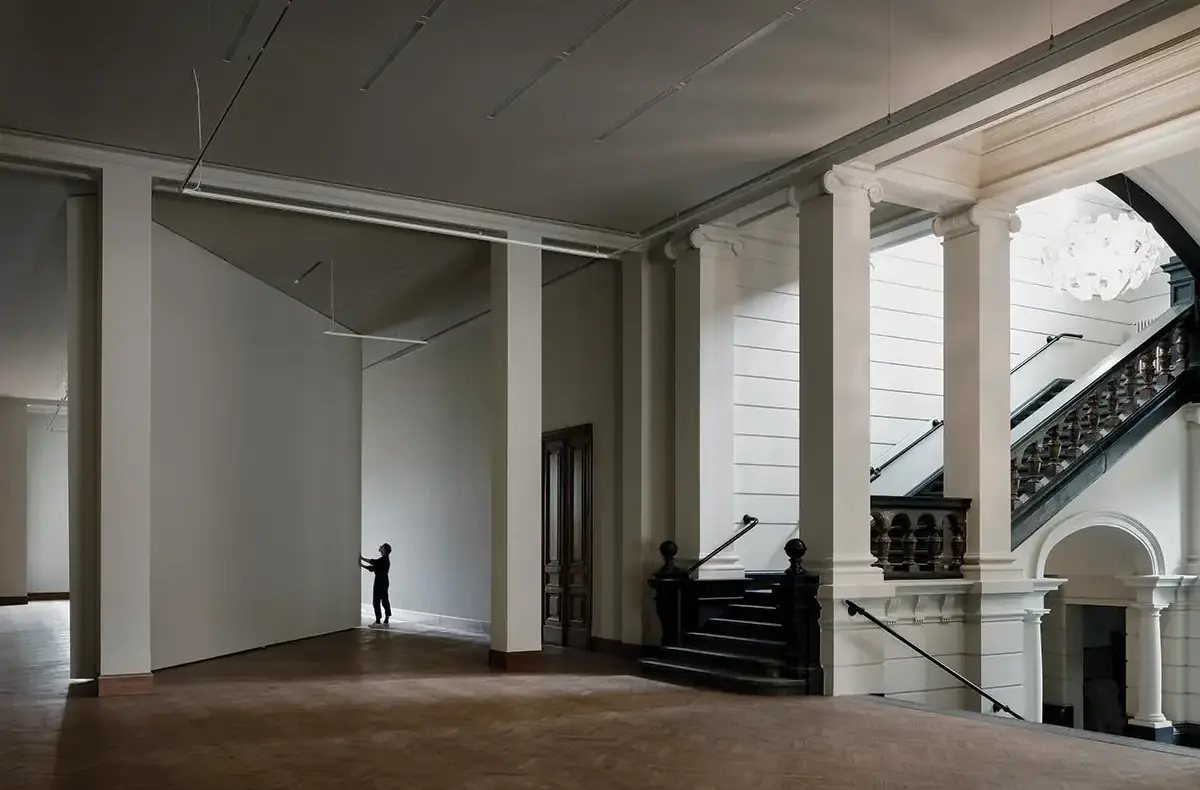
An 18-by-30- foot pivoting door allows large artworks to access a special elevator. Photo © Stijn Bollaert
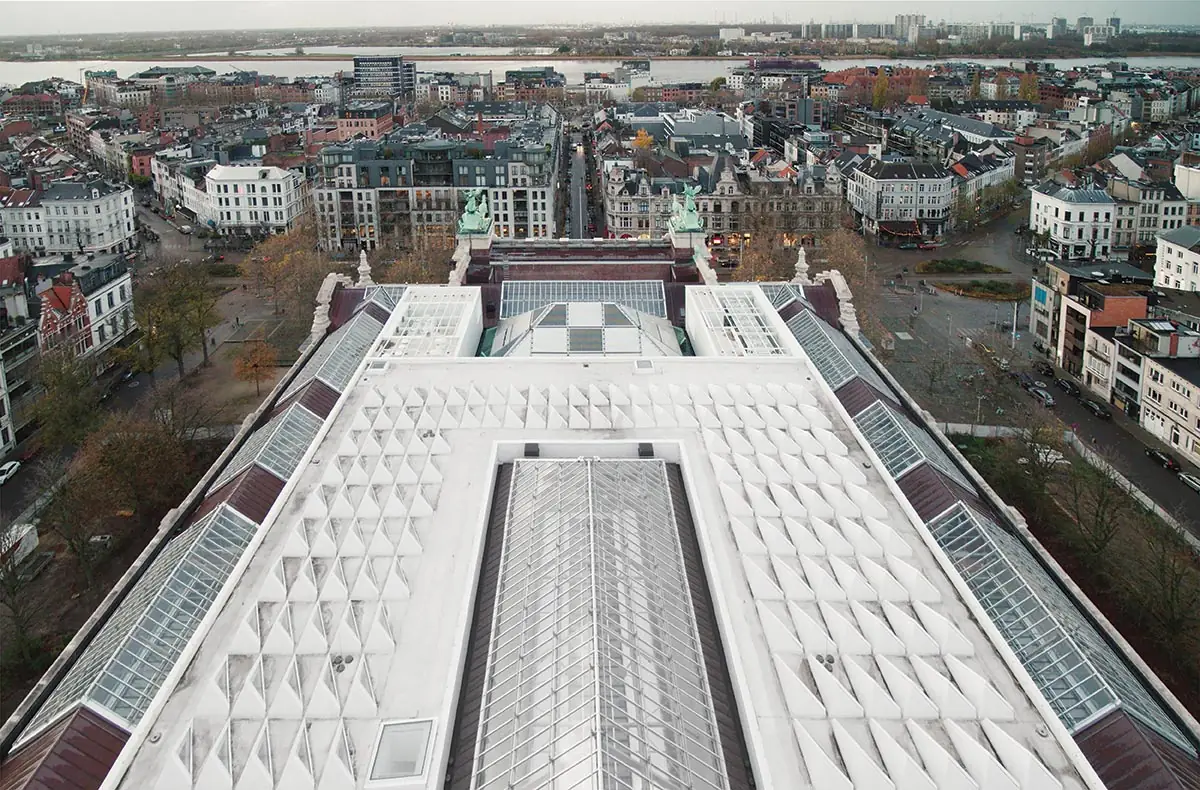
The addition, which is not visible from the street, includes 198 north-facing triangular skylights. Photo © Mediamixer
In contrast, self-expression reigns unchallenged in the new galleries. “I felt you could only fully respect the strength of the historic building if you answered it with equally strong architecture that didn’t try to say ‘I’m better than you,’” explains Scipio. “How do you do that? By designing the complete opposite and keeping it entirely separate.” To underscore the through-the-wardrobe transition, the entrances to the new galleries (located on the second floor, in the hallways beyond the monumental stairwell) take the form of fat pivoting-wall sections. Once over the threshold, you suddenly find yourself in snowy Narnia, an abstract, all-white world whose high-gloss resin floors reflect the daylight streaming down from 92 feet above. “Most of the canvases here were painted in natural light,” says Scipio, “so it’s of such value to bring it in. Though you must treat it carefully, to protect the artworks.” This is why KAAN’s 198 triangular skylights face north, bouncing daylight off their inclined white surfaces to achieve a diffuse effect.
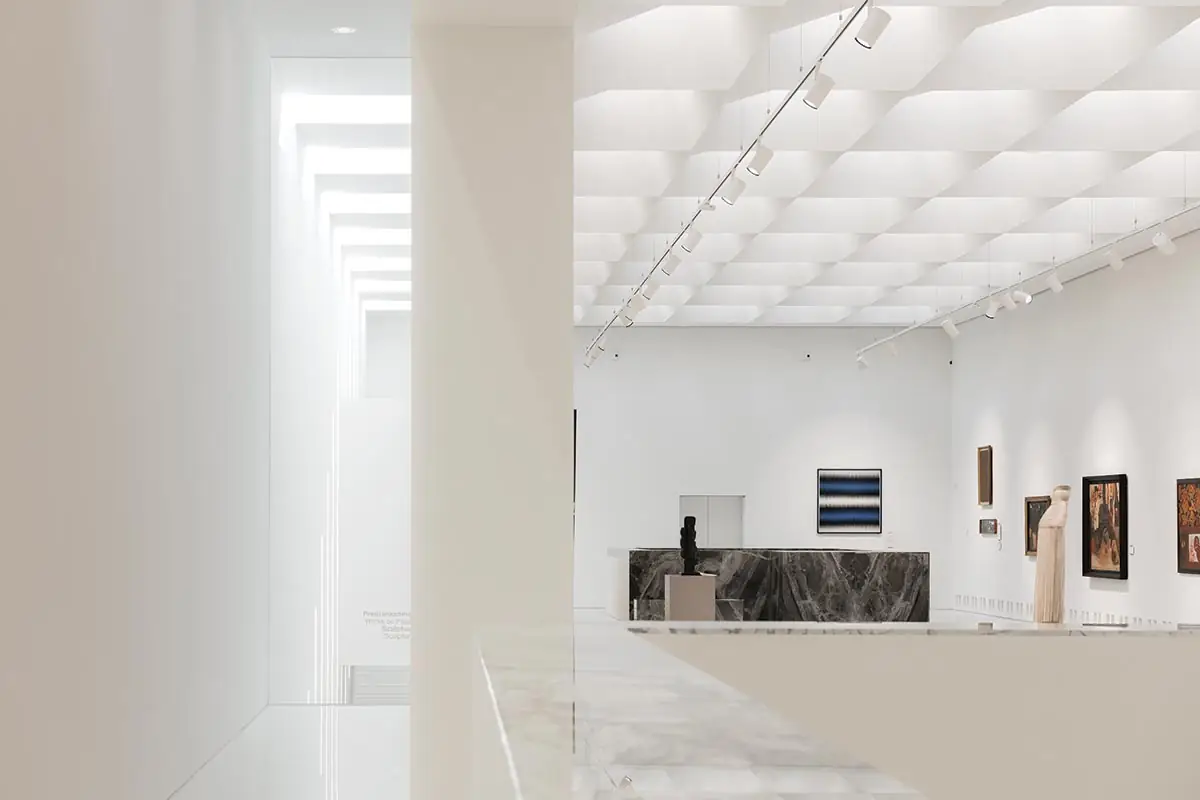
New gallery skylights bounce daylight off angled white surfaces. Photo © Sebastian Van Damme
The new upper galleries are reached either by elevators or monumental stairways—another cue picked up from the old building but, again, modernized, most spectacularly with a 103-step canyon cadenced by serried ranks of wall-mounted strip lights. Such dazzling Dutch aesthetics have proved controversial in the sophisticated world of Belgian architecture, known for its subtle approach to materials and renovation (“Star Wars,” sniffed an associate member of the Robbrecht en Daem team that designed new KMSKA furniture). Despite some soigné detailing—marble treated so the slabs remain whole, for example—Carlo Scarpa this is not. Dialogue between new and old fabric has been categorically shut down, while the restoration of Winders and Van Dijk’s galleries, though ingenious and meticulous, is a form of heritage make-believe whose ambiguities and ironies are neither explored nor even acknowledged. Furthermore, flexibility of display is precluded—Impressionist paintings, for example, being forced to contend with a gleaming and anachronistic white cube. Kristian Vistrup Madsen, in a generally positive Artforum review, wrote of “an aggressive spotlessness” and a “snowstorm” brightness that eventually “becomes strenuous.” But nonspecialists seem to like the revamp, an important consideration for a museum looking to broaden its appeal and increase attendance. “I never experienced this before,” confides Scipio, “but people in Antwerp reach out to me in the street and say, ‘Thank you for the museum. We’re so happy.’ Ordinary people, of course,” she laughs, “not architects.”
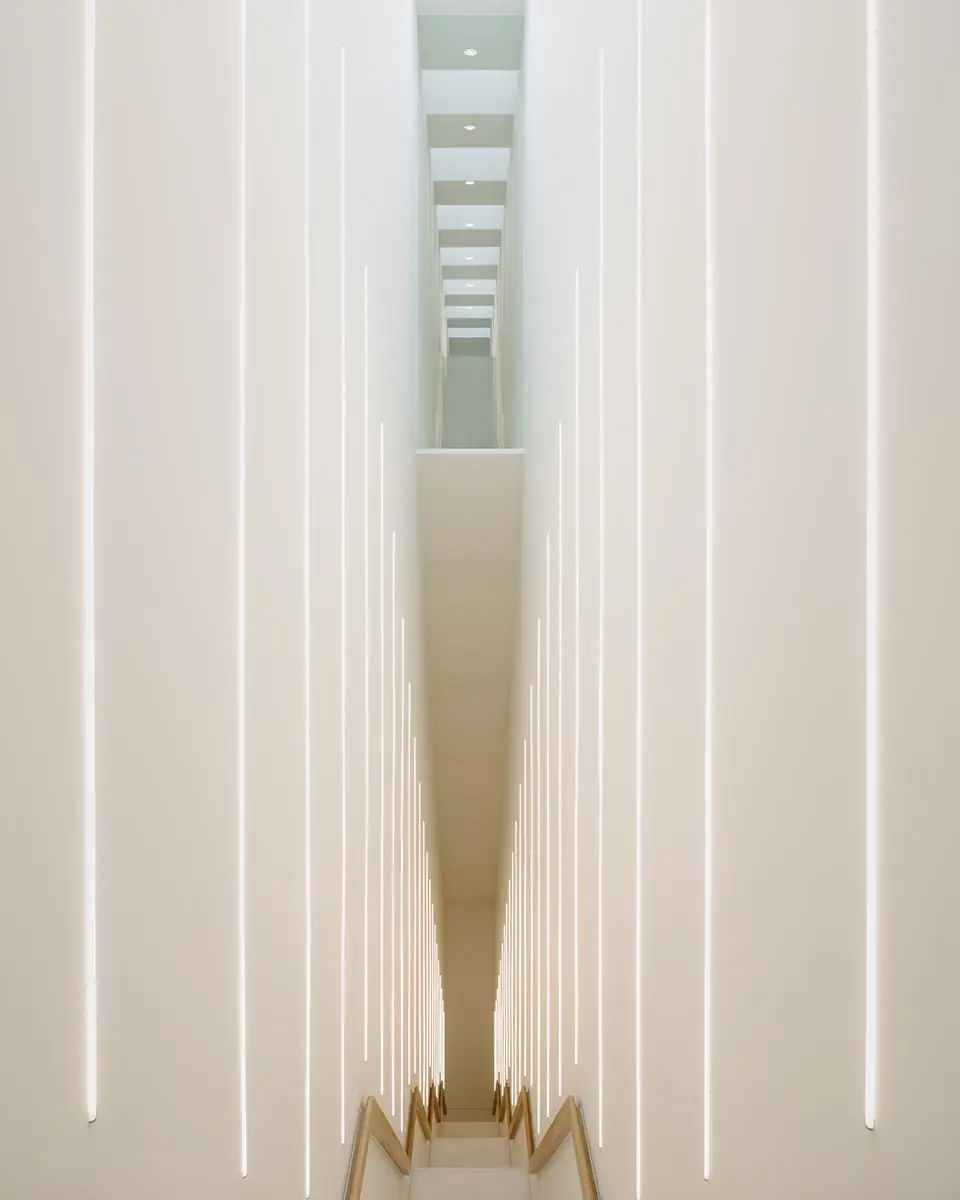
A long, narrow stair takes visitors to top-floor galleries. Photos © Stijn Bollaert
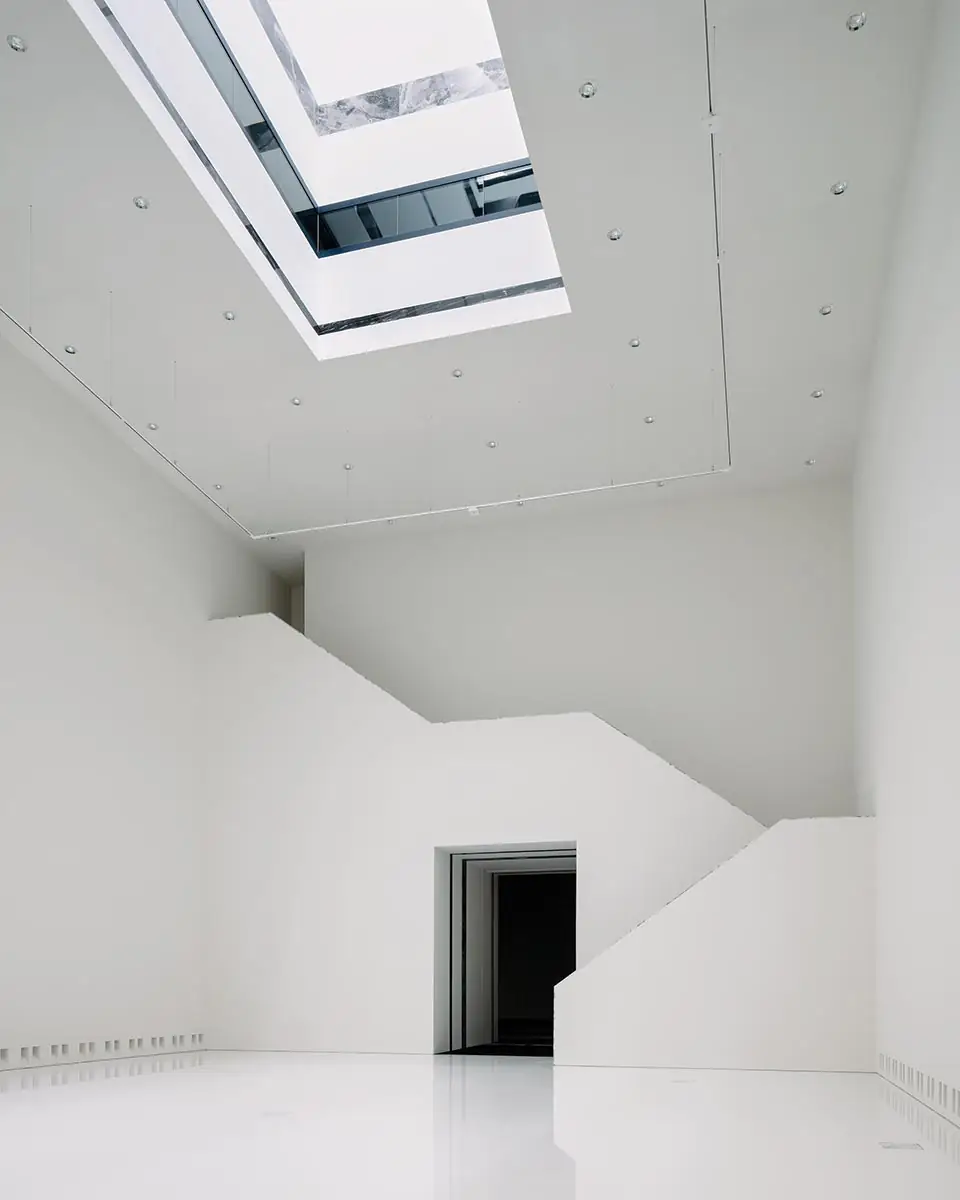
A gallery for 21st century art is topped by a light well. Photos © Stijn Bollaert
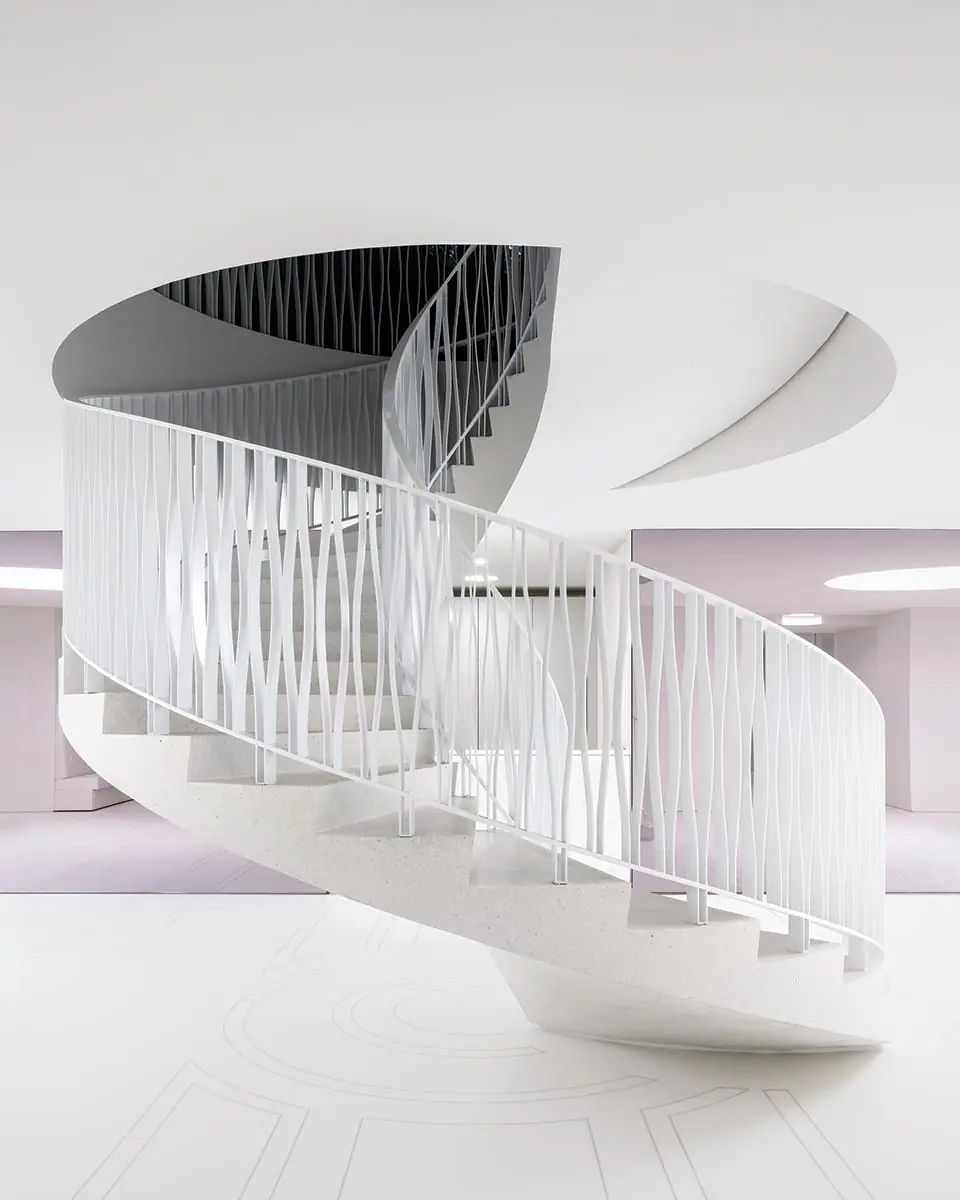
A spiral stair connects the street level to the second floor. Photos © Stijn Bollaert
Click plans to enlarge
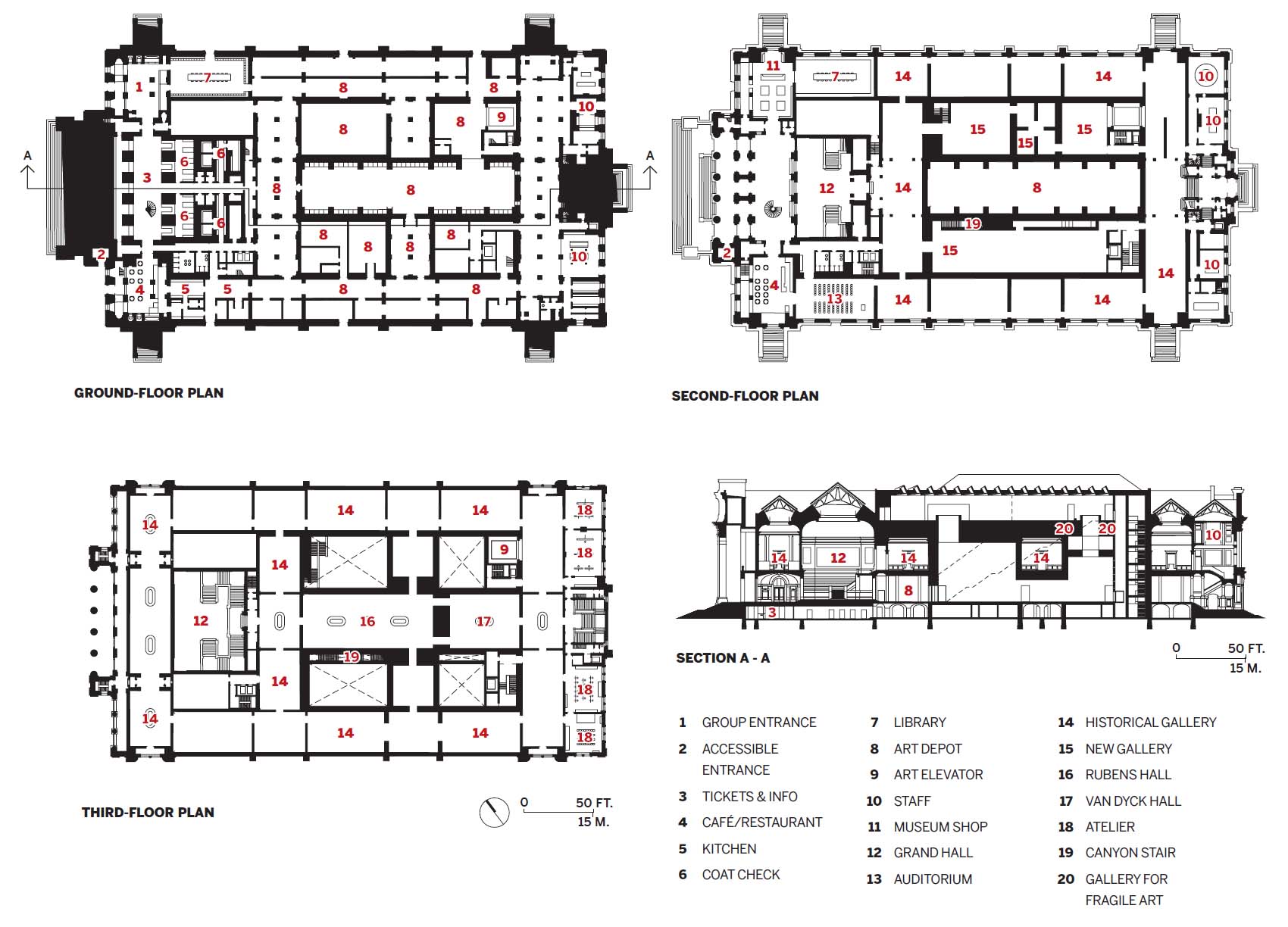
Click graphic to enlarge
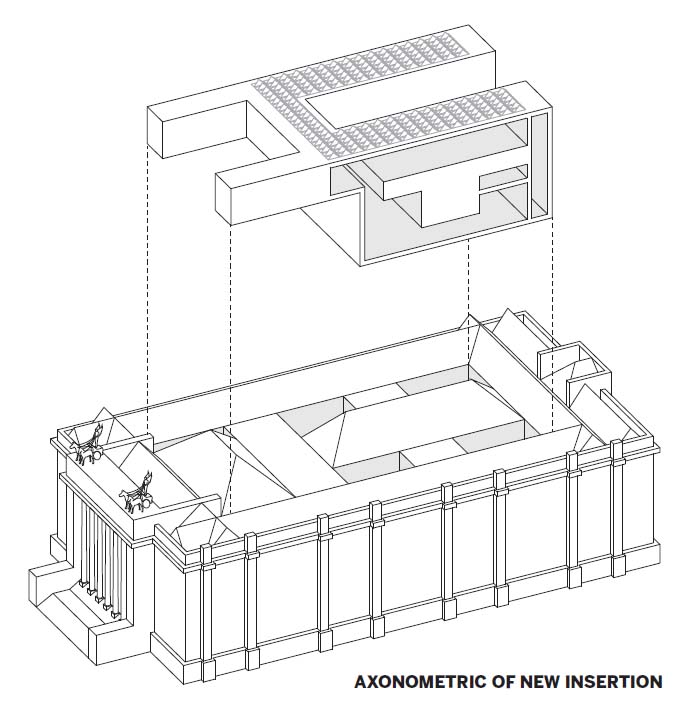
Credits
Architect:
KAAN Architecten — Kees Kaan, Vincent Panhuysen, Dikkie Scipio, principals; Walter Hoogerwerf, senior project leader
Engineer:
Royal Haskoning DHV (structural)
General Contractor:
THV Artes Roegiers; Artes Woudenberg
Consultants:
Architectenbureau Fritz (restoration)
Client:
Flemish Department of Culture, Youth and Media
Size:
323,000 square feet
Cost:
$109 million
Completion Date:
September 2022
Sources
Elastomeric Roofing:
ADCO
Copper Roofing:
Lion
Glazed Roofing:
Deforsche
Cabinetwork:
Kulapro
Floor and Wall Tile:
Vitra
Lighting:
Phillips; Bega; Luceplan; Trilux; LTS; Nemo; DKN Kreis; Ixilum; Etap
Elevators:
Hugo de Jongh




